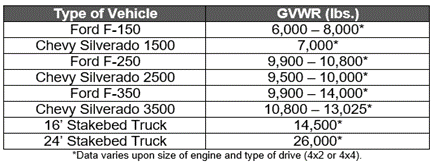
Young garbage removal worker driving a waste truck
All too often, I have heard the complaints of employees operating construction company vehicles being pulled over and issued DOT citations. It can be quite frustrating, not only for the employee, but for the company as well. Many contractors don’t realize their vehicles fall within DOT regulations. To avoid the situation, it’s important to understand what’s required by these regulations.
All employees who are required to operate a Commercial Motor Vehicle (CMV) must possess a proper license and abide by U.S. Department of Transportation regulations (DOT). Let’s start by defining what a commercial motor vehicle is. A CMV is a motor vehicle or combination of motor vehicle and trailer used in commerce to transport passengers or property.
Examples of a CMV are:
- Combination Vehicle (Group A): Having a gross combination weight rating or gross combination weight of 26,001 pounds or more (11,794 kilograms or more), whichever is greater, inclusive of a towed unit(s) with a gross vehicle weight rating or gross vehicle weight of more than 10,000 pounds (4,536 kilograms), whichever is greater (e.g., tractor/trailer)
- Heavy Straight Vehicle (Group B): Having a gross vehicle weight rating or gross vehicle weight of 26,001 pounds or more (11,794 kilograms or more), whichever is greater (dump truck)
- Small Vehicle (Group C): Does not meet Group A or B requirements, but either:
- Is designed to transport 16 or more passengers, including the driver (bus)
- Is of any size and is used in the transportation of hazardous materials (any vehicle)
If an employee must drive a vehicle for work that meets any of these descriptions, they fall under CMV guidelines. With that said, it’s very important to understand what the Gross Vehicle Weight Rating (GVWR) or Gross Combination Weight Rating (GCWR) of the vehicle is. The GVWR is a value specified by the manufacturer as the loaded weight of a single vehicle. This is often found in the owner’s manual or stamped on the Safety Compliance Certification label in the driver side door jamb. To put things into perspective, the following chart provides details toward common construction vehicles:

Another issue that may arise while transporting material is the actual weight of the material. Any vehicle or vehicle and towed unit (trailer) may be below DOT GCWR thresholds but when loaded triggers DOT rules. It’s important to calculate the weight of the load prior to transport. Some common construction materials to take into consideration include:

The GCWR is the greater of the value specified by the manufacturer or the sum of the GVWRs of the power unit (e.g., truck) plus the towed unit (e.g., trailer). A common mistake is not understanding that it doesn’t matter if the towed unit is loaded to capacity or empty. A few examples of towed vehicles that must be accounted for include:

Once it has been established that an employee may operate a CMV, we need to determine if a Commercial Driver’s License (CDL) is required. Similar to what is defined as a CMV, a CDL is required to operate:
- Any combination of vehicles with a Gross Combination Weight Rating (GCWR) of 26,001 pounds or more, providing the Gross Vehicle Weight Rating (GVWR) of the vehicle being towed is in excess of 10,000 pounds (e.g., tractor + heavy equipment flatbed trailer)
- Any single vehicle with a GVWR of 26,001 pounds or more, or any such vehicle towing another not in excess of 10,000 pounds (e.g., tractor + 16’ utility trailer)
- Any vehicle, regardless of size, designed to transport 16 or more persons, including the driver
- Any vehicle, regardless of size, required by federal regulations to be placarded while transporting hazardous materials
After the weight of the load is calculated, the driver must determine if the vehicle or combination of vehicles is loaded within its limitations
As the rules of the road and the heightened awareness toward public safety increases, it is imperative to understand the basics for employee licenses. For starters, always confirm federal laws through the Federal Motor Carrier Safety Administration (FMCSA) and the state laws of where company vehicles will be operated to ensure full compliance. Always ensure that employees possess a valid license prior to issuing a vehicle. Make certain drivers comply with any additional laws that may affect the employee or the business.
For more on DOT regulations in construction, reach out to an MMA advisor.




